The euro is the common currency of over 340 million people and a strong symbol of European unity.
Euro banknotes are issued by the national central banks of the euro area in quantities approved by the European Central Bank and they are legal tender in all euro area. Euro banknotes are printed at 11 locations in the euro area.
There are two series of euro banknotes in circulation. The first series comprises seven different denominations (€5, €10, €20, €50, €100, €200 and €500). The second series, or Europa series, has the same denominations, except the €500 denomination. This denomination is no longer being printed, but it can still be used as a means of payment. Irrespective of the series, each euro banknote denomination is visually recognisable by a dominant colour and architectural motif. The dimensions of the euro banknotes of the first and the second series of the €5, €10, €20 and €50 denomination are identical, while the dimensions of the €100 and €200 banknotes of the first and the second series differ.
Euro banknotes depict the architectural motifs in the styles from different period of Europe’s history. The first series was issued in 2002, while the euro banknotes of the Europa series were issued gradually over the period between 2013 and 2019. The €5 banknote was issued in 2013, €10 in 2014, €20 in 2015, €50 in 2017 and €100 and €200 banknotes were issued in 2019.
The second series is called Europa because the banknotes feature a portrait of Europa, a figure from Greek mythology.
Name and symbol of the monetary unit
The name “the euro” was chosen in 1995 by a European Council meeting in Madrid.
The symbol € is based on the Greek letter epsilon (Є), with the first letter of the word “Europe” and with two parallel lines signifying stability.
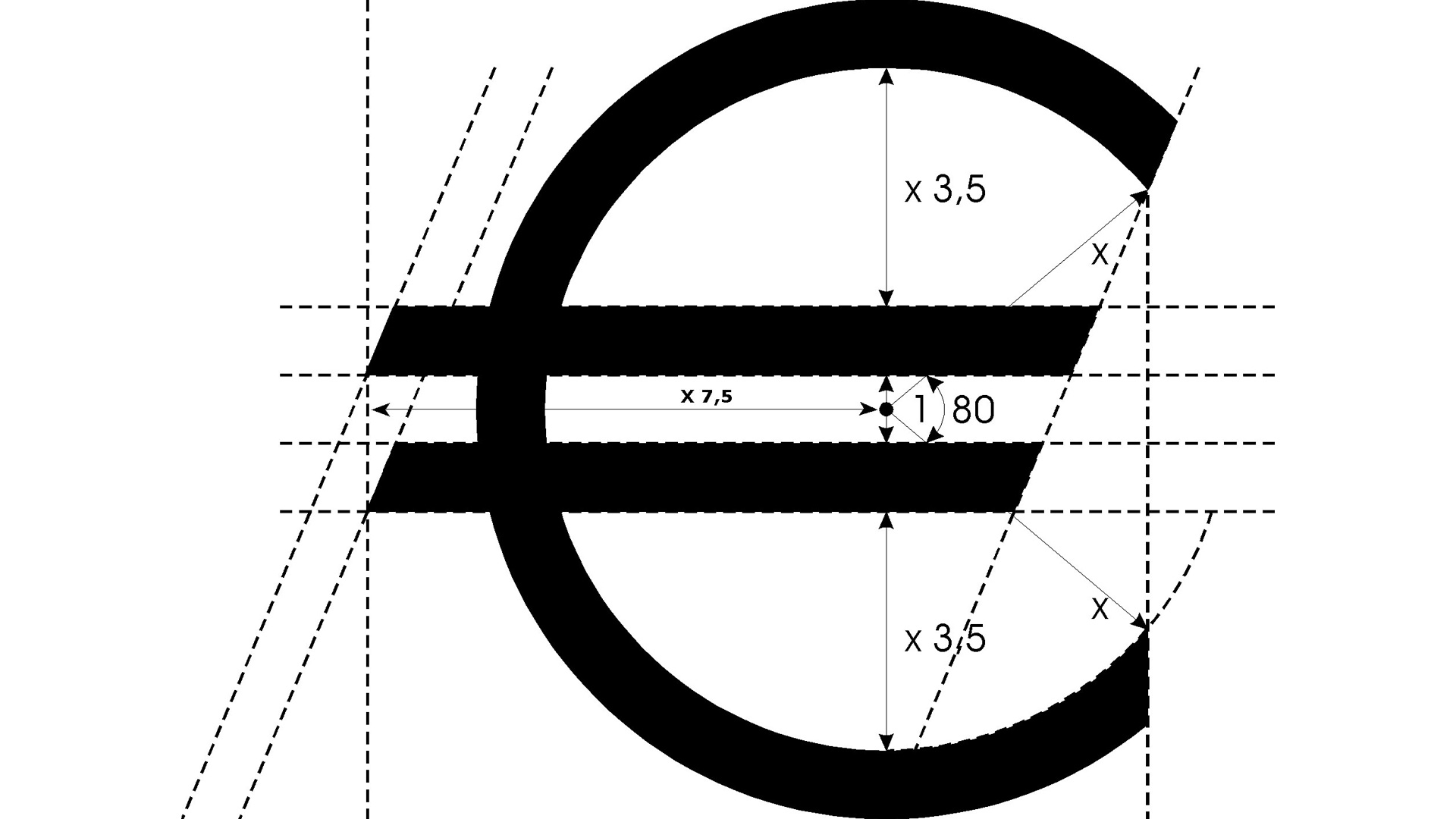
The ISO code for the euro is EUR. This is used when referring to euro amounts without using the symbol.
Motifs on the obverse side and the reverse side of euro banknotes
Euro banknotes show the architectural motifs of the theme “Ages and Styles of Europe”. The designs of the first series of banknotes are by Robert Kalina, and the redesigns for the Europa series banknotes are by Reinhold Gerstetter. Each denomination is illustrated by a different architectural style. On the obverse side of euro banknotes, windows and doorways are shown and the reverse side features bridges. The windows and doorways symbolise the European spirit of openness and co-operation, while the bridges symbolise communication between the people of Europe and between Europe and the rest of the world. Windows, doorways and bridges featured on the banknotes are stylised illustrations. They are not the images of parts or whole actual existing constructions.
Architectural styles depicted on banknotes
- 5 €: Classical
- 10 €: Romanesque
- 20 €: Gothic
- 50 €: Renaissance
- 100 €: Baroque and rococo
- 200 €: 19th century iron and glass architecture
- 500 €: 20th century architecture, from 1930.
The following design elements, irrespective of the denomination, are shown on all euro banknotes:
- the name of the currency (euro) in both the Latin (EURO) and the Greek (EYPΩ) alphabets, while the Europa series also has the name in Cyrillic alphabet (EBPO);
- the initials of the European Central Bank – on the first series banknotes there are initials in five linguistic variants, while, due to the EU enlargement, on the Europa series euro banknotes the number of linguistic variants rose to nine on the €5, €10 and €20 banknotes and ten linguistic variants on the €50, €100 and €200 banknotes, after the initials of the European Central Bank in Croatian was added;
- the symbol © indicating copyright protection;
- the EU flag;
- the signature of the President of the European Central Bank.
Signatures
| Willem F. Duisenberg | Jean-Claudea Trichet | Mario Draghi |
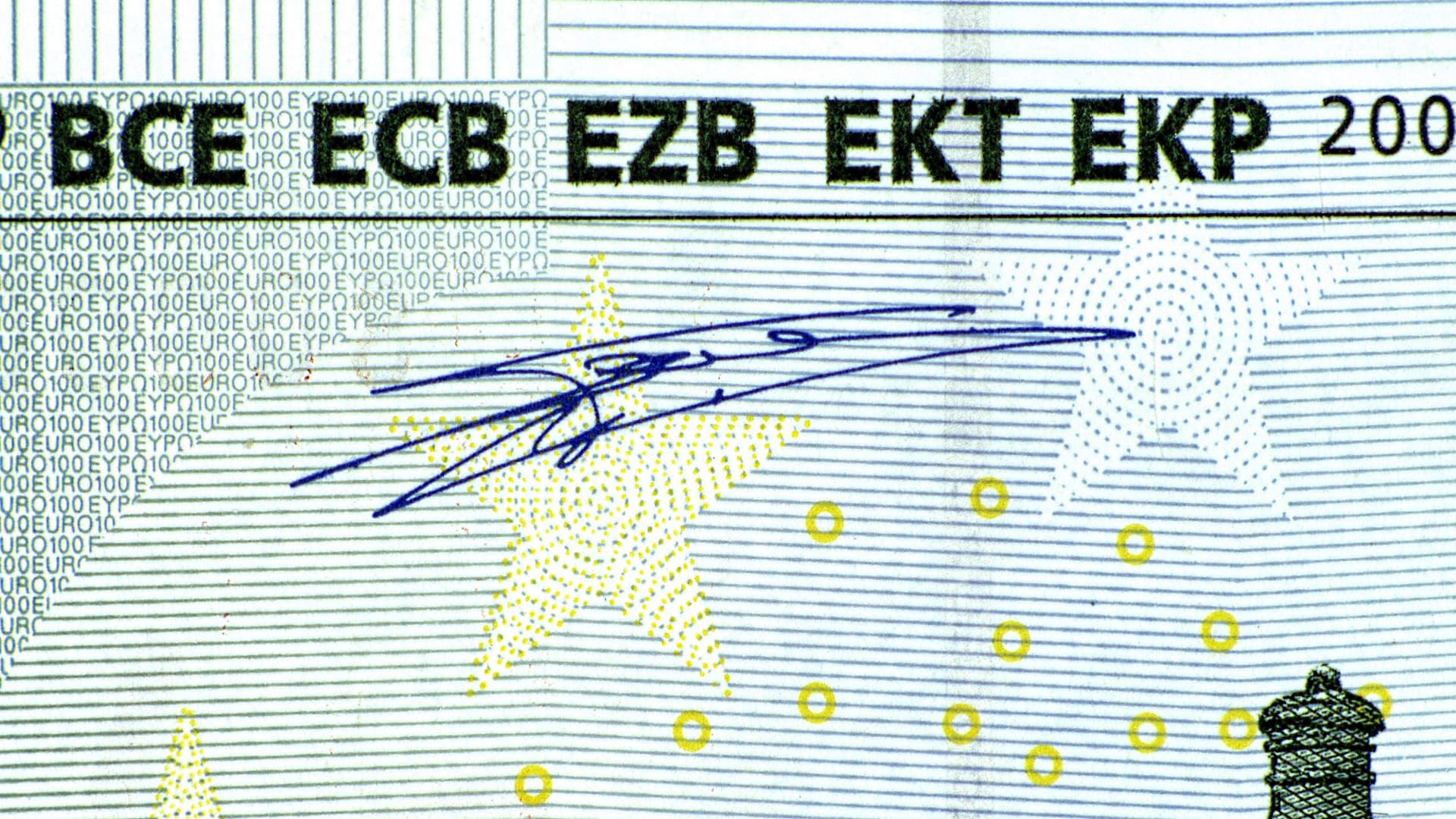 |
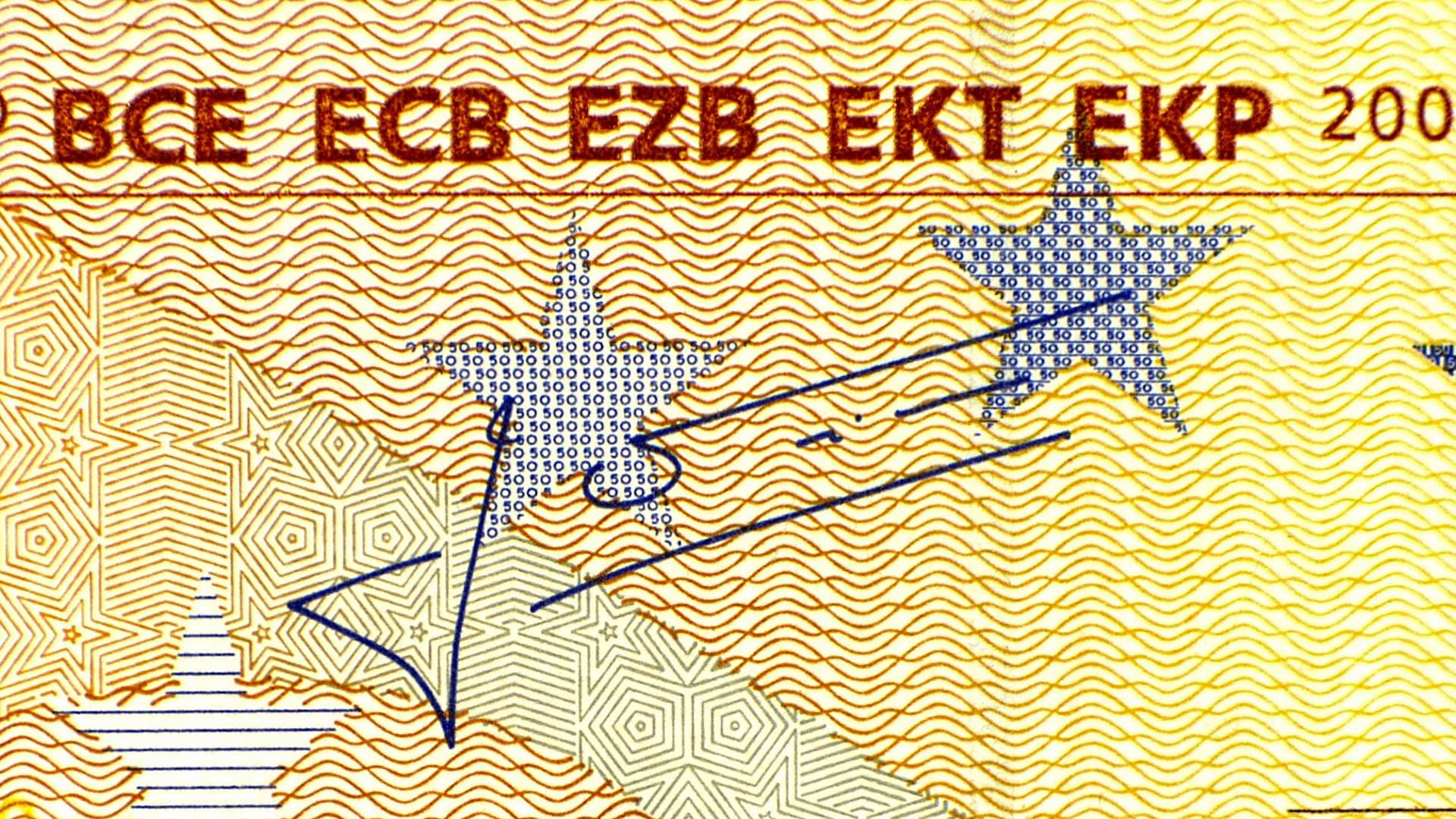 |
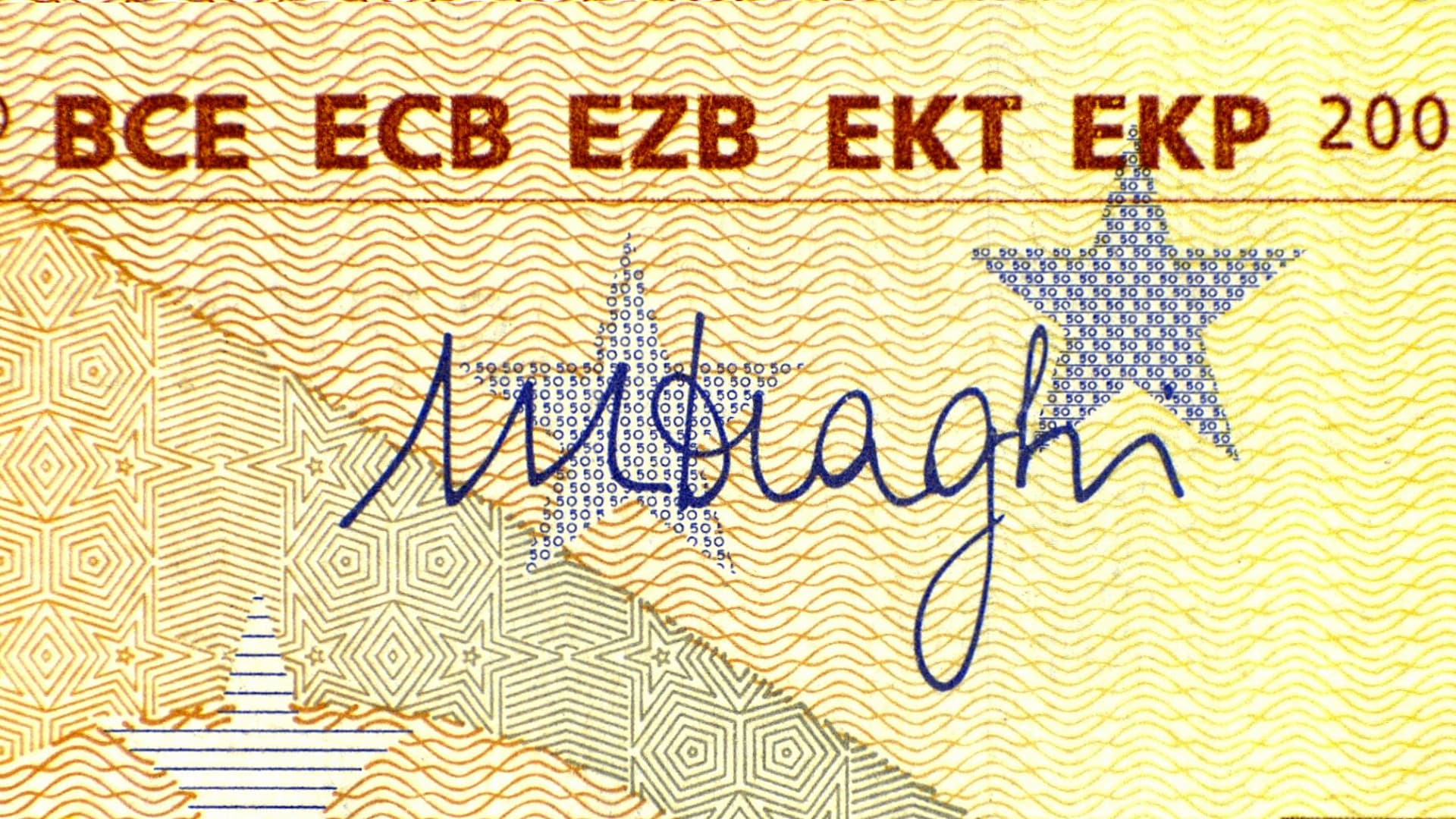 |
The obverse side of each euro banknote of the first series bears the signature of one of the former Presidents of the European Central Bank: Willem F. Duisenberg (the first), Jean-Claude Trichet (the second) or Mario Draghi (the third). The signature is located under the initials of the name of the European Central Bank.
| Mario Draghi | Christine Lagarde | |
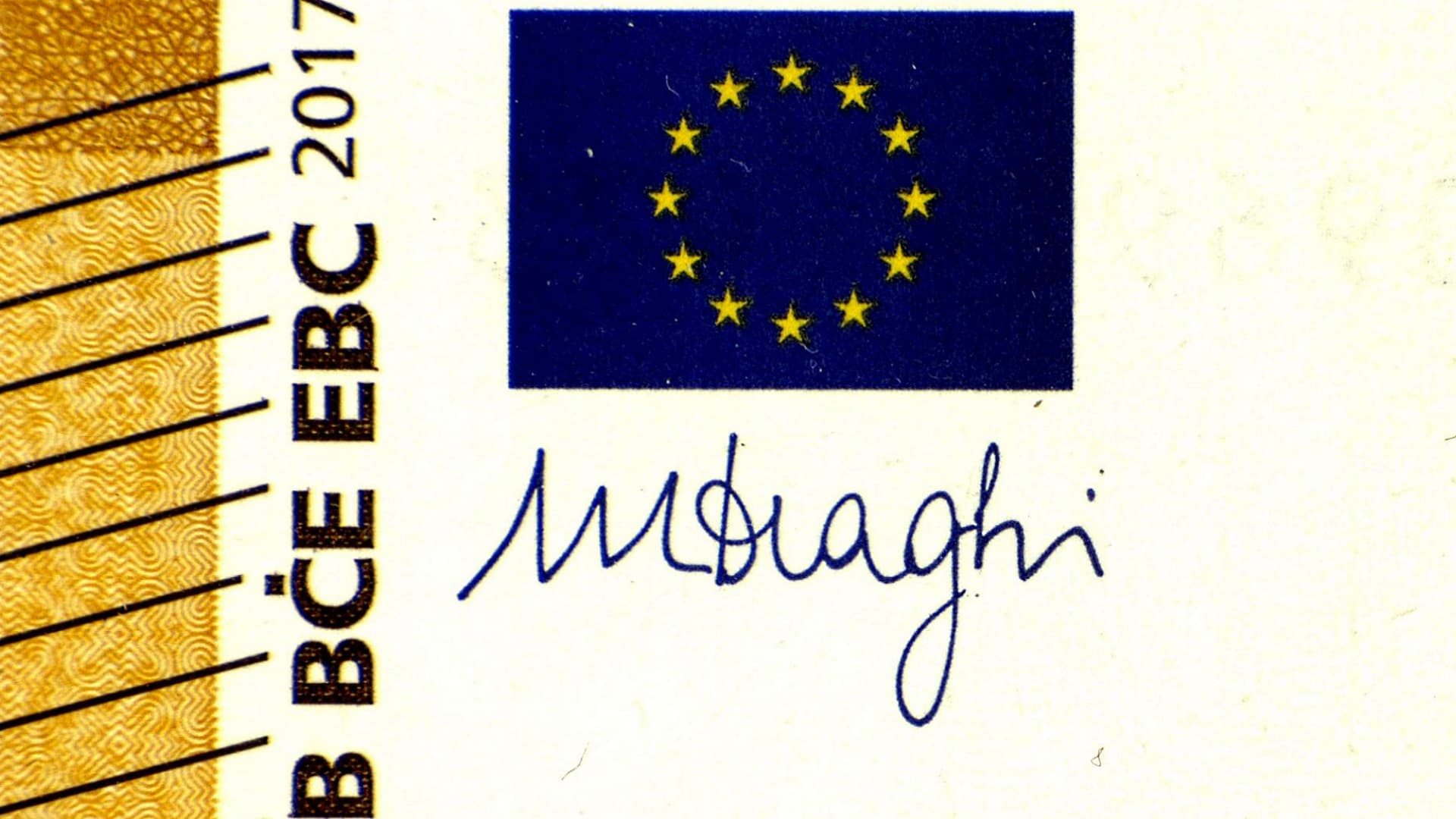 |
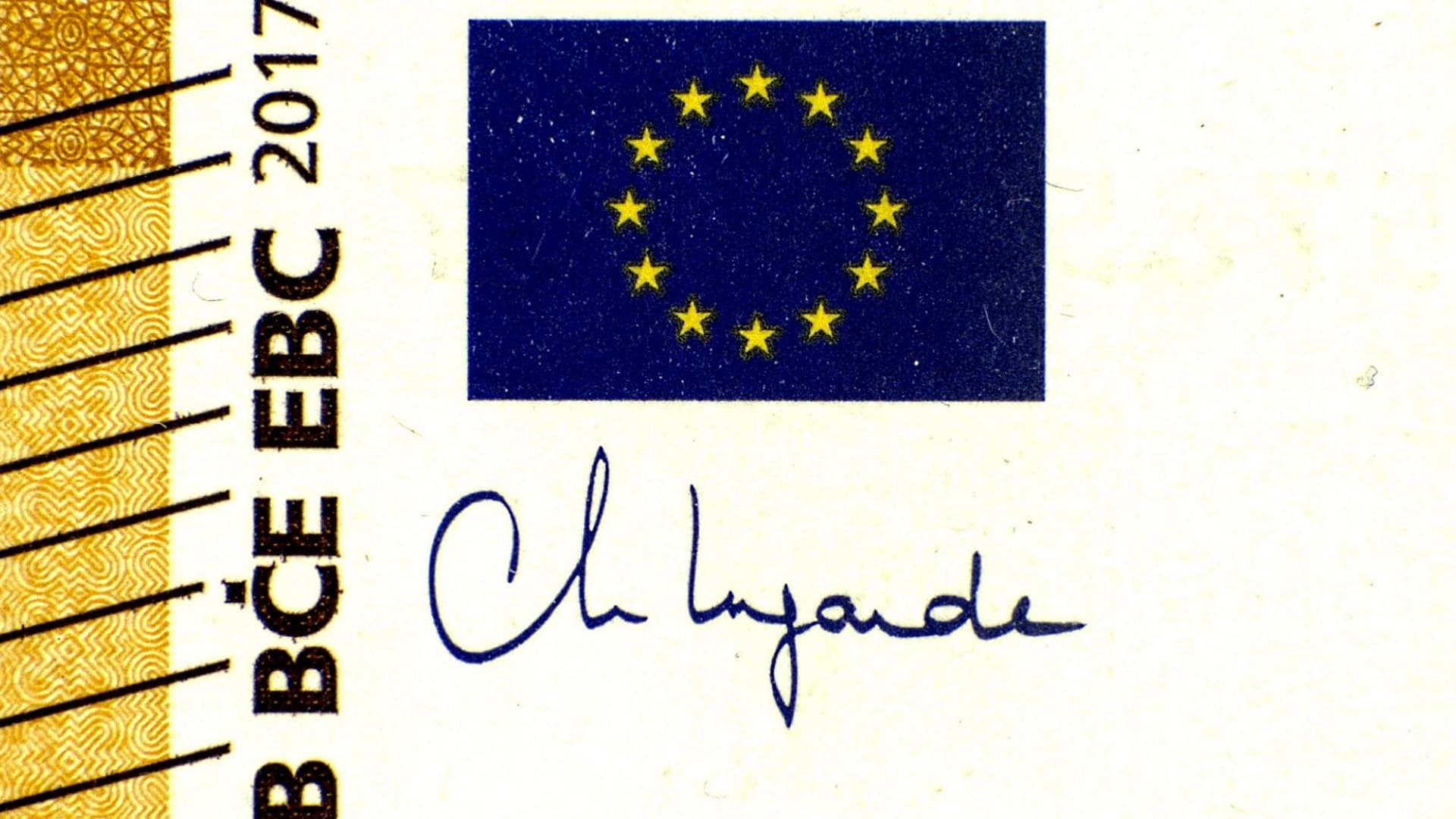 |
The obverse side of each Europa series euro banknotes bears the signature of the third President of the European Central Bank Mario Draghi or the current President Christine Lagarde. The signature is featured under the EU flag motif. All banknotes are equally valid, irrespective of the signature implemented in their design.
The first and the second series euro banknotes are in circulation.
